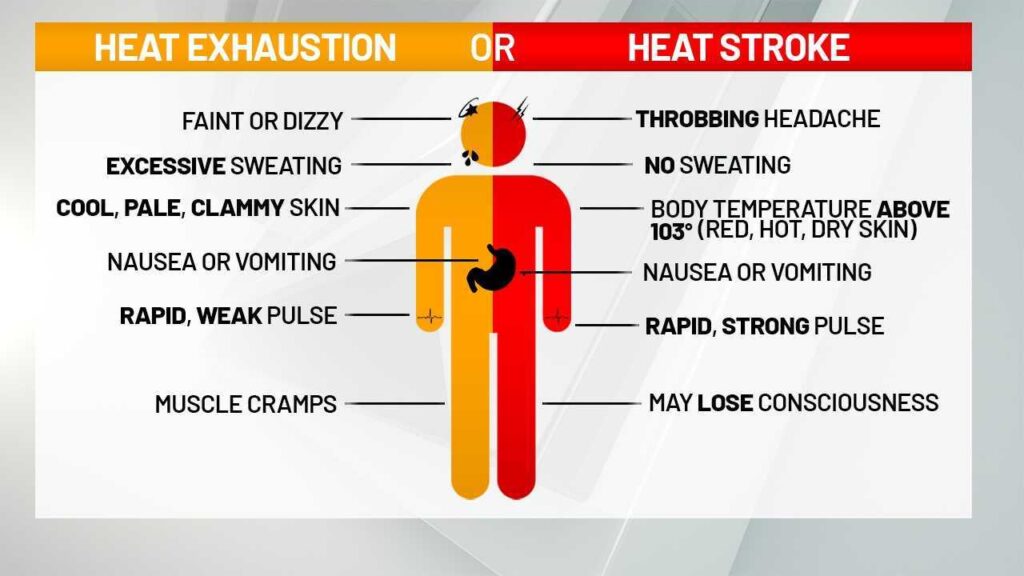Spring is here, and Summer is coming! The heat is on, and it’s only getting hotter. Staying healthy isn’t just about lifting weights and doing metcons. It also means trying to take care of ourselves as a whole. During this season, knowing how to avoid heat stroke and heat exhaustion is crucial for looking after ourselves.
Staying hydrated is something to be taken very seriously. CrossFit is fun. You may think we try to kill you with some WODs, but we actually want you to be healthy and feel good. Here are some tips for staying hydrated, cool and healthy during the summer months.
STAY HYDRATED AND COOL
Water, water, water. Seriously – get tons and tons of water. In Kentucky, it is not only hot but humid too. And we sweat buckets!
You have to get lots of water. With that being said, your water also needs to replenish you. Electrolytes, and certain minerals need to be fed back into your body when you are sweating as much as we do in the summer. Minerals like potassium, calcium, magnesium, and sodium are all found in your sweat. Make sure you allow your body to get extra of these so you stay healthy.
Also, get in the shade and in front of a fan. The sun can be physically and mentally draining when you are in it for hours on end. Plus, your skin can only take so much heat and sun before it becomes damaged. Do your body a favor: hydrate, shade, and fan.
HEAT EXHAUSTION VS HEAT STROKE
Heat related injuries can be very dangerous. If the proper precautions are not taken, they can result in major problems and even death. First and foremost, it’s important to know how to avoid heat stroke and heat exhaustion.
However, if either of these heat injuries do occur, quick actions and proper medical attention are crucial in treating them. But how do you know exactly which heat related injury you’re dealing with?

SYMPTOMS OF HEAT EXHAUSTION:
Heat exhaustion is one of the three heat-related injuries. Heat cramps is the mildest and heat stroke is the most severe. Without treatment, heat exhaustion can develop into heat stroke quickly, which is very dangerous.
- Heavy sweating.
- Weakness.
- Cool, pale, clammy skin.
- Fast or weak pulse.
- Possible muscle cramps.
- Dizziness.
- Nausea or vomiting.
- Fainting.
HOW TO TREAT HEAT EXHAUSTION:
- Move person to a cooler environment.
- Lay person down and loosen clothing.
- Apply cool, wet cloths to as much of the body as possible.
- Fan or move victim to air conditioned room.
- Offer sips of water.
SYMPTOMS OF HEAT STROKE:
Heat stroke is more serious than heat exhaustion. It requires immediate medical attention. Symptoms include:
- Altered mental state. The patient may be confused.
- One or more of the following: throbbing headache, confusion, nausea, dizziness, shallow breathing.
- Body temperature above 103°F.
- No longer sweating but has become dry.
- Rapid and strong pulse.
- Fainting/losing consciousness.
HOW TO TREAT HEAT STROKE:
- Heat stroke is a severe medical emergency. Call 911 or get the victim to a hospital immediately. Delay can be fatal.
- Move the victim to a cooler, preferably air-conditioned, environment.
- Reduce body temperature with cool clothes or a bath.
- Use a fan if heat index temperatures are below the high 90’s. A fan can make you hotter at higher temperatures.
- Do NOT give fluids.
FINAL TIPS FOR HOW TO BEAT THE HEAT
Paying attention to how your body feels and performs is the key to staying healthy and safe. No WOD is worth possibly dying. Instead, remember how to avoid heat stroke and heat exhaustion. And know how to treat them if you do suffer a heat injury.
Stay hydrated and healthy, and have an awesome summer.